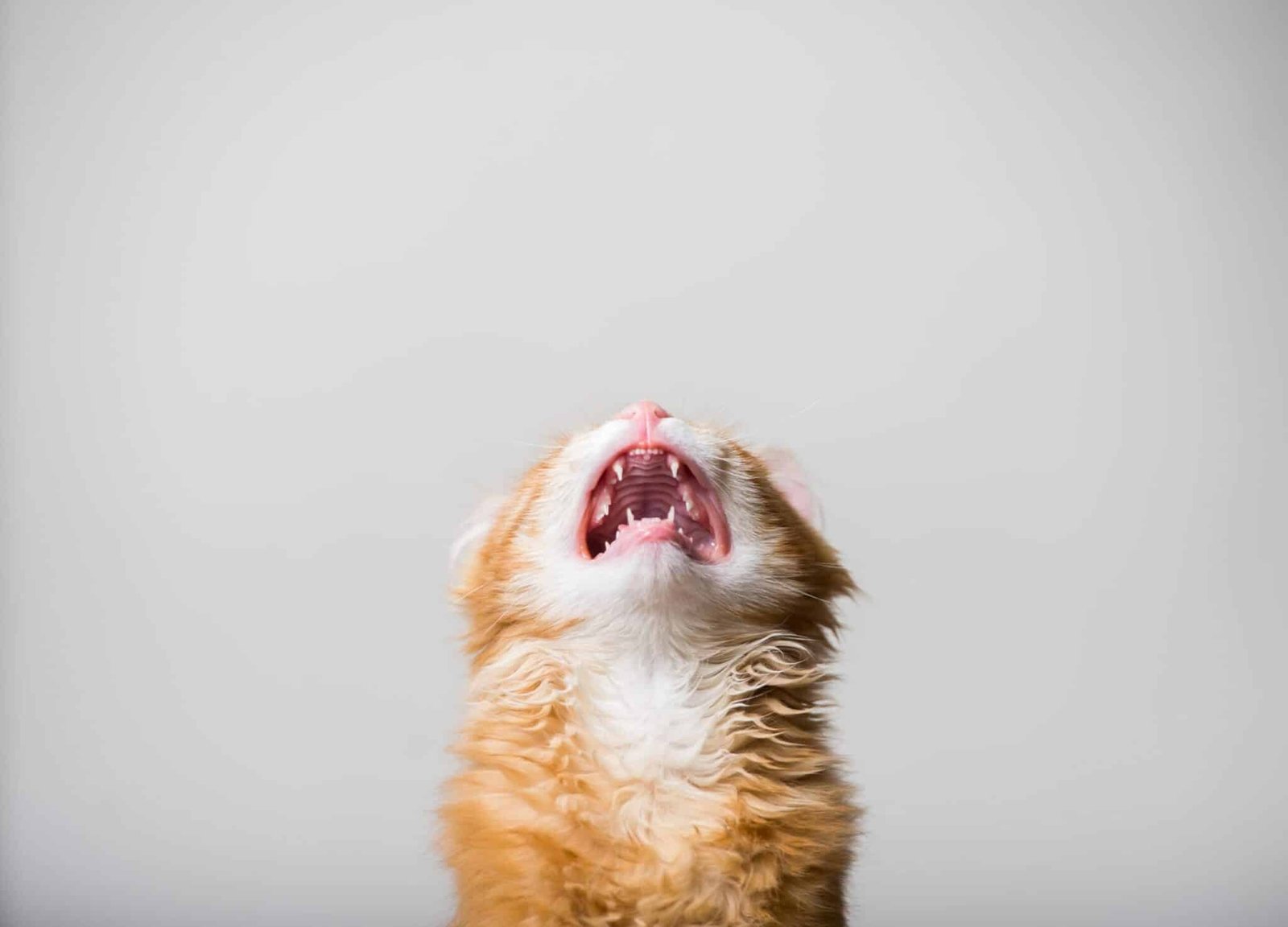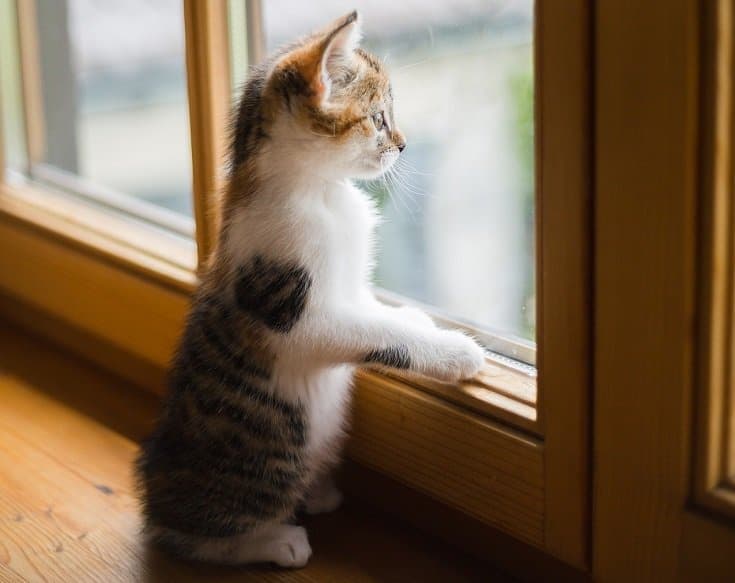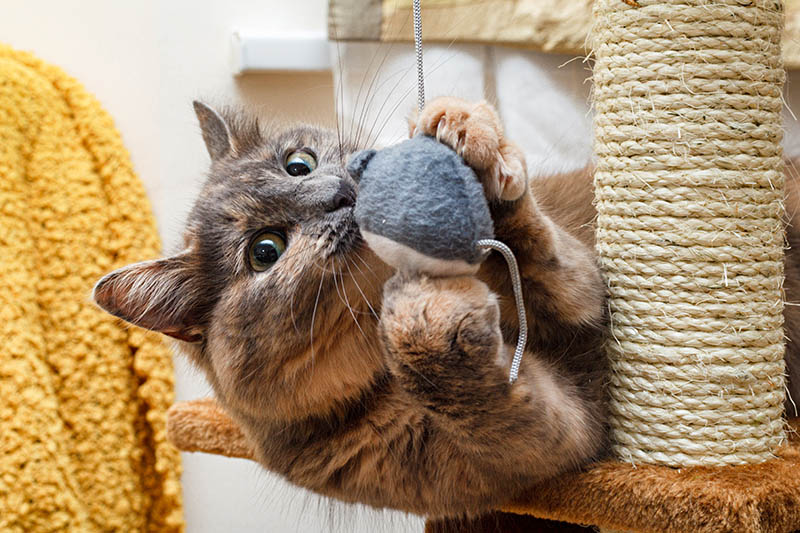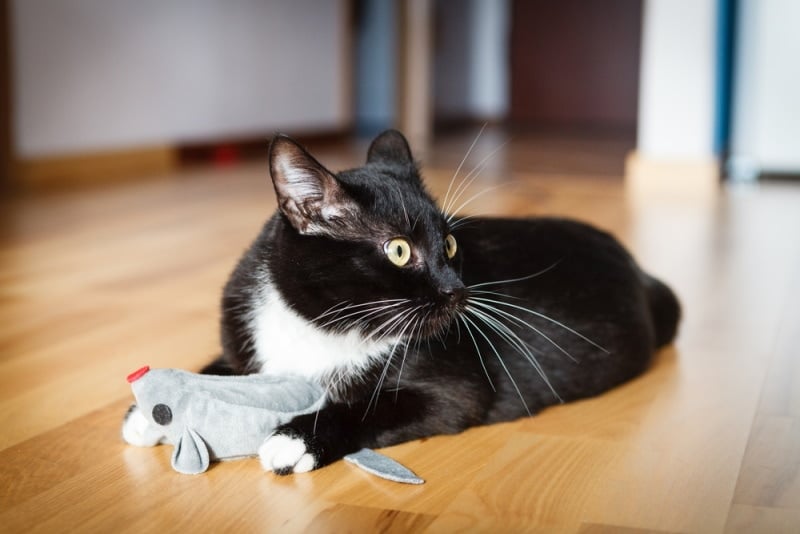
[adinserter block=”1″]
While cats are often considered not to be terribly interested in people, they’re sensitive, loving creatures that become deeply attached to those they share their lives with. Companion cats develop bonds with their people that resemble those formed between babies and their caregivers, so it makes sense that some have difficulty when their source of love, affection, and security is unavailable.
Because the presence of their favorite person also helps cats manage anxiety, some find being left alone simply overwhelming. Cats that cry when their favorite person leaves home are often suffering from separation anxiety.
What Does Separation Anxiety Look Like in Cats?
Cats with separation anxiety often pee and poop outside of the litter box and spend lots of time crying and yowling. They may also groom themselves excessively and engage in destructive behavior when experiencing anxiety due to being left alone.
Female cats are more likely to demonstrate their distress through grooming issues, and males are often more inclined to become destructive. Many cats that develop separation anxiety like to spend lots of time with their favorite person and follow them from place to place to get their human companion’s attention.

Are There Factors That Predispose Cats to Develop the Condition?
A few traits appear to increase the likelihood of cats developing the condition, including being only pets and routine changes such as moving or being adopted by a new family. Many cats become distressed when their favorite person has a schedule change due to a new job or longer commute.
It’s also more commonly seen in female cats and those that are exclusively indoor pets. Kittens that were hand-raised or orphaned sometimes grow into cats with anxiety issues when left alone. Since cats are masters at hiding signs of illness, behavioral changes are often the only clues that something may be off, so consult your veterinarian to ensure there’s no underlying physical condition that may be causing the behavior.

Are There Ways to Help Cats With The Condition?
There are several ways to encourage cats to be happy, healthy, and mellow, which can sometimes help manage stress and anxiety. There are also options, such as working with a behavioral therapist, that may be helpful in particularly complex situations.
1. Activities
Enrichment activities can keep cats busy when left alone, which may decrease the stress they feel simply by giving them something else to focus on. Soft music designed specifically for cats may help provide a calming environment and something to keep pets company as the day goes by.
Puzzle feeders that require cats to work for their treats can keep them occupied with something they love (snacks) long enough for them to forget to be upset that you’re leaving.

2. Keep Things Mellow
Help your cat feel comfortable when you leave and come home by making the activities around your departures and arrivals non-events. Giving cats something to do while you’re getting ready may distract their attention from anticipating the stress of being left alone.
3. Reward What You Want to See
Punishment never works with cats, and it can increase their stress, which may exacerbate the problem. Because cats are so sensitive and interested in pleasing their favorite people, rewarding what you want to see is generally the key to getting them to move in preferred directions.
Consider giving your cat praise and treats when you “catch” them hanging out by themselves and otherwise behaving confidently when you’re home. You can also give them treats and cuddles when they stay calm when you come home.
4. Create Routine
Cats sometimes become stressed when their favorite person’s routine changes, and they’re unavailable to provide love when pets have come to expect cuddles and fun.
Try to create and stick with a routine so your cat can spend their day knowing they’ll have cuddle time right before bed or after the dishes are put away.

5. Relaxation
You may be able to teach your cat to stay relaxed during your departures, in part by regularly giving them praise and treats when you see them being mellow. Start small and reward them when they’re hanging out and appear relaxed.
Eventually, up the ante and introduce a cat bed that your cat can begin to associate with being cool and laid back. Once your cat has the hang of being nice and relaxed while hanging out in bed, practice leaving and rewarding them for remaining calm in their bed as you exit the room.
6. Professional Help
If you’ve tried everything and still can’t seem to make progress when it comes to being able to leave your cat alone, consider reaching out for help! Your veterinarian may be able to provide guidance on behavioral modification techniques, and they can also evaluate whether medication may be helpful in your cat’s specific situation. There are also veterinary behavioral therapists who can help.

Conclusion
Cats that become upset and cry when their favorite people leave may be suffering from separation anxiety. Separation anxiety often causes cats to eliminate outside of the litter box, groom themselves to the point of excess, and engage in destructive behavior.
Solo indoor cats and those that were weaned early can develop the sorts of intense attachments that lead to separation anxiety. While a veterinarian should always evaluate cats to rule out other causes for the behavior, a few things may improve the situation, such as providing fun things for your cat to do and implementing routines, which often increases cats’ sense of comfort.
Featured Image Credit: SoNelly, Shutterstock
[adinserter block=”1″]
Credit : Source Post






